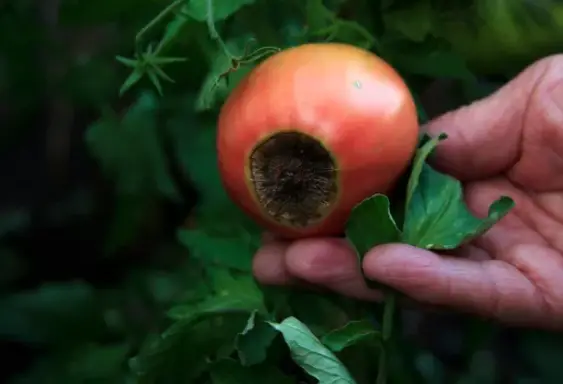Because of their adaptability and delectable flavor, tomatoes are a popular among both farmers and backyard gardeners.
Yet, cultivating tomatoes can occasionally be difficult, particularly when the fruit starts to develop black spots.
These black spots not only detract from the aesthetic appeal of tomatoes, but they may also point to more serious problems that need to be addressed.
In order to assist you in maintaining healthy, spot-free crops, we will examine the numerous sorts of black spots that can appear on tomatoes, their causes, and potential remedies in this blog post.
8 the Different Types of Black Spots in Tomatoes
Blossom End Rot

Blossom end rot is a common disorder that leads to black, sunken spots at the blossom end of tomatoes.
Despite its name, it is not caused by a pathogen but rather by a calcium deficiency. When the plants are unable to take up enough calcium from the soil, the developing fruit suffers, leading to this characteristic black spot.
Irregular watering, fluctuations in soil moisture, and imbalances in soil pH can contribute to this condition.
Maintaining consistent watering, ensuring adequate calcium availability in the soil, and maintaining proper soil pH can help prevent blossom end rot.
Black Mold
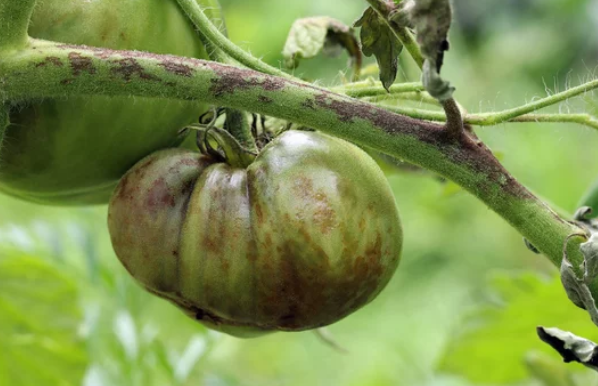
Black mold, also known as sooty mold, appears as a thin layer of black, powdery substance on the surface of tomatoes.
It is not a direct result of a disease but is rather a secondary issue caused by the presence of honeydew, a sticky substance secreted by sucking insects like aphids or whiteflies.
The honeydew provides an ideal substrate for the growth of black mold.
To address this issue, it is important to control the population of the primary insects responsible for honeydew secretion.
Regularly inspecting and managing pests in your garden, using insecticidal soaps or neem oil, and encouraging beneficial insects are effective control measures.
Early Blight
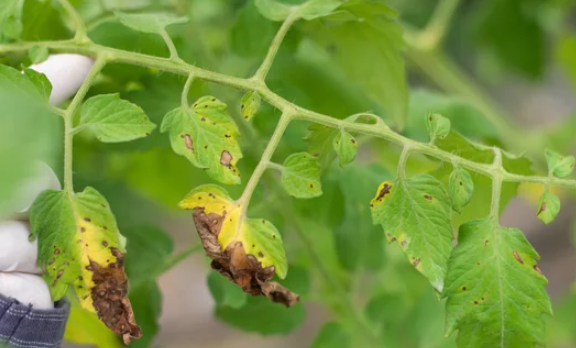
Early blight is a fungal disease that can affect tomatoes at any stage of growth. It manifests as circular, black spots with concentric rings on the leaves, stems, and fruits.
The spots start small but gradually enlarge and can cause significant damage if left unchecked.
Early blight is caused by the fungal pathogen Alternaria solani, which thrives in warm and humid conditions.
To manage early blight, employ cultural practices such as crop rotation, adequate spacing between plants for better air circulation, and the removal of infected plant debris.
Fungicides can also be used as a preventive measure or for severe infections.
Late Blight

Late blight is a devastating disease that affects tomatoes and other Solanaceae crops.
It is caused by the oomycete pathogen Phytophthora infestans, infamous for causing the Irish potato famine.
Symptoms of late blight include water-soaked lesions on leaves, stems, and fruits, which eventually turn black and leathery.
In humid conditions, a white, fuzzy mold may develop on the underside of the affected leaves.
To control late blight, practice good sanitation by removing infected plants, provide adequate spacing for air circulation, and apply appropriate fungicides.
Timely prevention and early detection are crucial to prevent the spread of this destructive disease.
Septoria Leaf Spot

Septoria leaf spot is a common fungal disease that affects tomato plants. It appears as small, circular black spots with grayish-white centers on the leaves.
As the disease progresses, the spots may enlarge and merge together, causing the leaves to yellow and eventually drop.
Septoria leaf spot thrives in warm and humid conditions, spreading through splashing water and infected plant debris.
To manage this disease, it is important to provide adequate air circulation, avoid overhead watering, remove infected leaves, and apply appropriate fungicides.
Anthracnose

Anthracnose is another fungal disease that can affect tomatoes, causing black, sunken lesions on the fruits.
The spots may also develop concentric rings and produce a salmon-colored, slimy mass of spores in wet conditions.
Anthracnose can spread through infected plant debris, splashing water, and even through contaminated gardening tools.
To prevent and manage this disease, practice crop rotation, remove infected plant material, ensure proper plant spacing, and apply fungicides if necessary.
Bacterial Canker
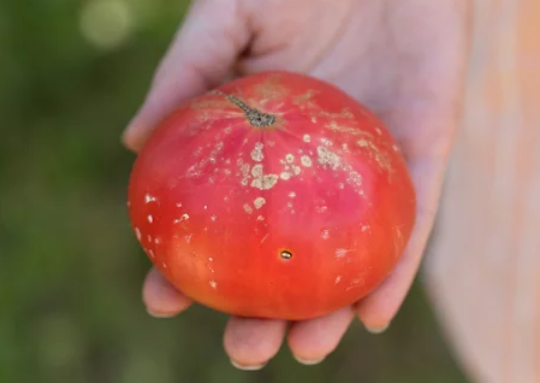
Bacterial canker is a bacterial disease that affects tomato plants, causing black, sunken lesions on the stems, leaves, and fruits.
The affected areas may have raised, corky tissue around the spots. Bacterial canker is often introduced through infected seedlings or contaminated tools.
To prevent the disease, use disease-free seeds or seedlings, sanitize gardening tools, and avoid working with plants when they are wet.
There are no effective treatments for bacterial canker, so prevention is key.
Related post: Caterpillars in Oklahoma
Tomato Spotted Wilt Virus (TSWV)
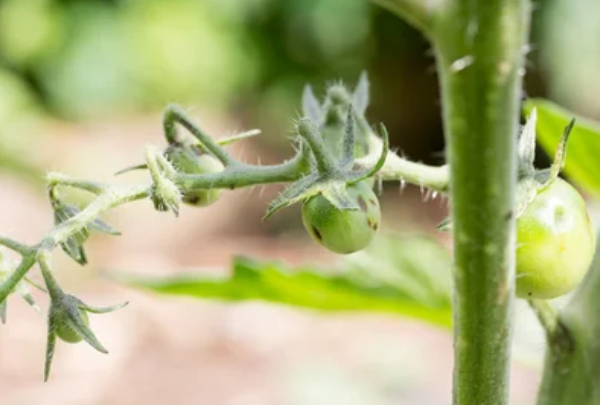
Tomato Spotted Wilt Virus is a viral disease that affects a wide range of plants, including tomatoes.
Infected plants develop black, necrotic spots on the leaves, stems, and fruits. The spots may also appear bronze or silver and may have concentric rings.
TSWV is primarily spread by thrips, tiny insects that feed on the plant sap.
Managing thrips populations through proper sanitation, using reflective mulches, and implementing insecticides can help prevent the spread of this virus.
Remember, early detection, proper cultural practices, and timely intervention are essential in managing these black spot issues and maintaining healthy tomato plants.
Warp Up
Many factors, including as nutrient deficits, pests, and fungi, can result in black patches on tomatoes.
You may take the proper steps to prevent and manage these problems when it comes to the various forms of black spots and their underlying causes.
To ensure healthy tomato plants with few instances of black spot, regular inspection, appropriate watering, preserving soil health, and implementing integrated pest management measures are essential.
You may reap a plentiful harvest of delectable, picture-perfect tomatoes year after year with the correct care and attention.

